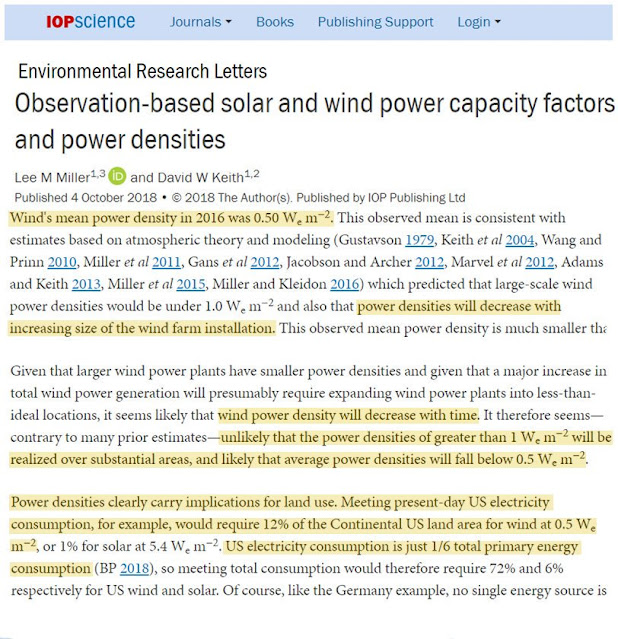Climate "Crisis" Part III: Are "Renewables" Good for the Environment? (10% posted)
"At what point then is the approach of danger to be expected? I answer:
If it ever reach us, it must spring up amongst us. It cannot come from abroad.
If destruction be our lot, we must ourselves be its author and finisher."
-- Abraham Lincoln, Jan. 27, 1838
Most people have busy lives and full-time careers that leave little time for deep dives into scientific research, so, often out of necessity, we find ourselves trusting the news and politicians to tell us what "The Science" is. And, since we're not cynics, we presume they're doing this in good faith. In recent years, we've heard many claims about "renewable" energy, which is almost always presented as an unalloyed good.
So, today we're going to examine an aspect we hear little about, in an attempt to answer a simple, yet fundamental, question:
Are "renewables" good for the real environment?
When I say "real" environment, I am referring to the environment that can be objectively measured and observed through scientific methods. This means that the impacts are verifiable and not dependent on hypothetical scenarios or speculative models that can be manipulated for financial or political gain.
In other words: Good old fashioned hard science.
Stay through the end for some shocking revelations, but if you've already read Parts I and II, you can skip past the italics immediately below.
(Previously, on Is There a Climate "Crisis": In Part I, mainstream paleoclimatology showed us that the Arctic is notably colder today than it was a mere 7-10,000 years ago.
In Part II mainstream science from the IPCC, NOAA, NASA, et al, debunked the claim that extreme weather has "gotten worse due to climate change."
Finally, as we've discussed previously, "change" and "crisis" are two very different things. There's a scientific consensus on climate change, but there is zero consensus that this change represents any sort of "crisis." The use of the term "crisis" originated with politicians and media and is not shared by (not all, but) most scientists.)
There's plenty more to examine in terms of climate, but for today's deep dive, we will simply look at "renewables" to see whether they are indeed "good for the planet." Since we've all heard the argument in favor (which essentially begins and ends with "renewables don't emit CO2 during operation"), we're not going to rehash that argument here and will instead examine the aspects of renewables that are less common knowledge, starting with:
Wind Power
According to the Wall Street Journal, one single wind turbine requires 900 tons of steel, 2,500 tons of concrete and 45 tons of plastic.
Thus, a larger wind farm requires hundreds of thousands of tons of concrete, steel, and plastic. Obviously, that's not a "green" operation -- but we haven't even gotten to the good stuff yet, because the biggest thing wind requires is land. How much land? Prohibitive amounts, because wind is not a dense energy source like nuclear, gas, and oil.
To meet present electricity needs for the continental United States, wind turbines would need to cover an incredible 12% of the country's land mass.

That's 374,000 square miles of wind turbines.
Since it's hard to envision how large 374,000 square miles is, here's ~369,500 square miles outlined in black on Google maps (some of the lines have extra squiggles because I got tired of starting over):

pretzelcharts.com |






